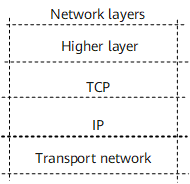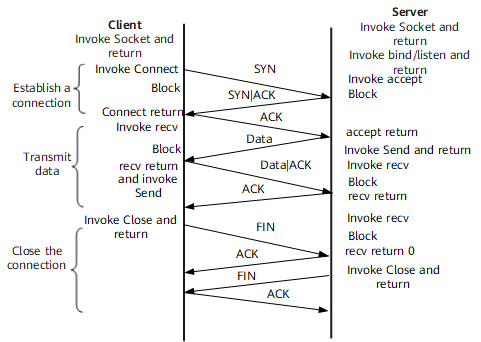TCP
The Transmission Control Protocol (TCP) defined in standard protocols ensures high-reliability transmission between hosts. TCP provides reliable, connection-oriented, and full-duplex services for user processes. TCP transmits data through sequenced and nonstructural byte streams.
TCP is an end-to-end, connection-oriented, and reliable protocol. TCP supports multiple network applications. In addition, TCP assumes that the lower layer provides only unreliable datagram services, and it can run over a network of different hardware structures.
Figure 1 shows the position of TCP in a layered protocol architecture, where TCP is above IP. TCP can transmit variable-length data through IP encapsulation. IP then performs data fragmentation and assembly and transmits the data over multiple networks.
TCP works below applications and above IP. Its upper-layer interface consists of a series of calls similar to the interrupt call of an operating system.
TCP can asynchronously transmit data of upper-layer applications. The lower-layer interfaces are assumed as IP interfaces. To implement connection-oriented and reliable data transmission over unreliable networks, TCP must provide the following:
Reliability and flow control functions
Multiple interfaces for upper-layer applications
Data for multiple applications
Connection assurance
Communication security assurance
Figure 2 shows the process of setting up and tearing down a TCP connection.

